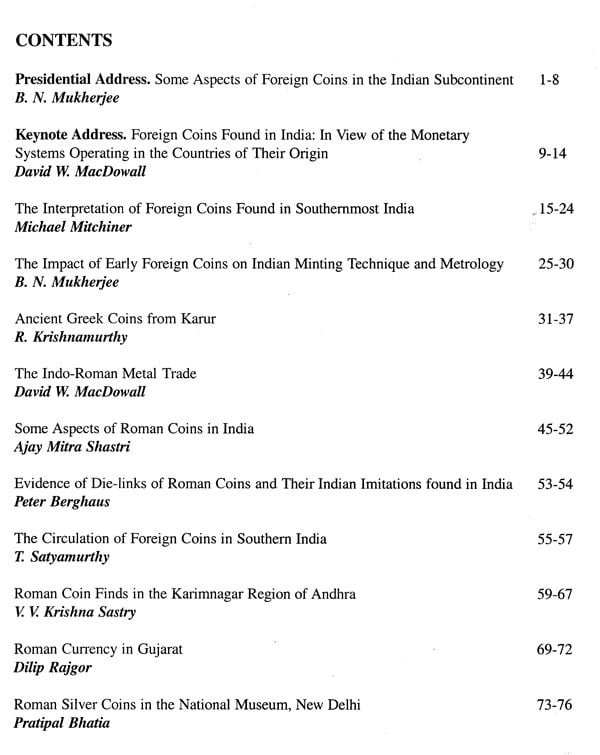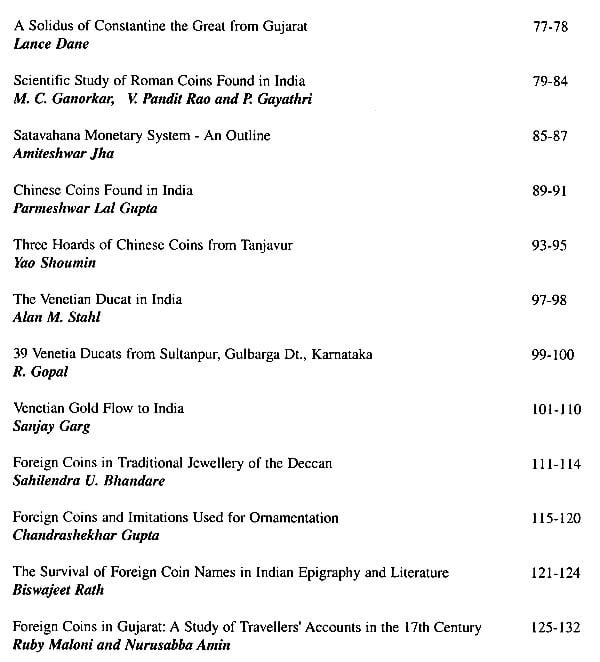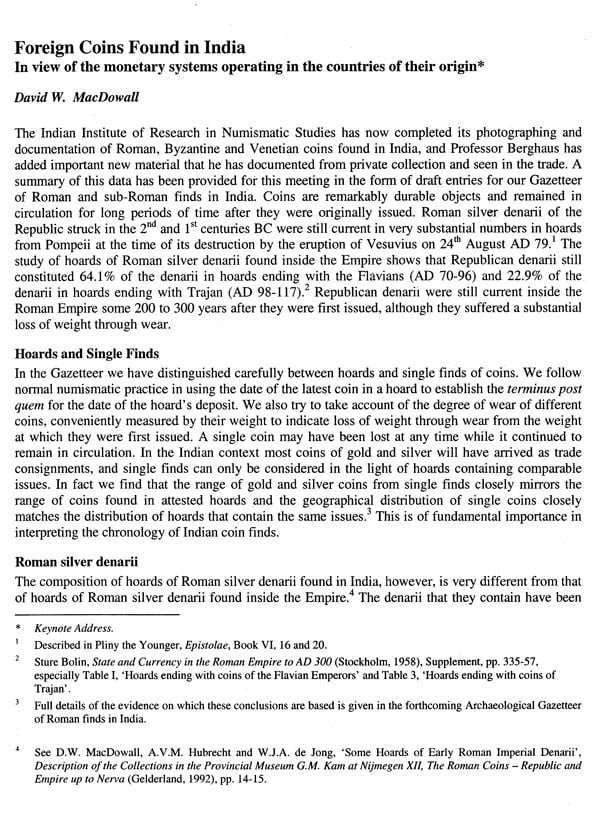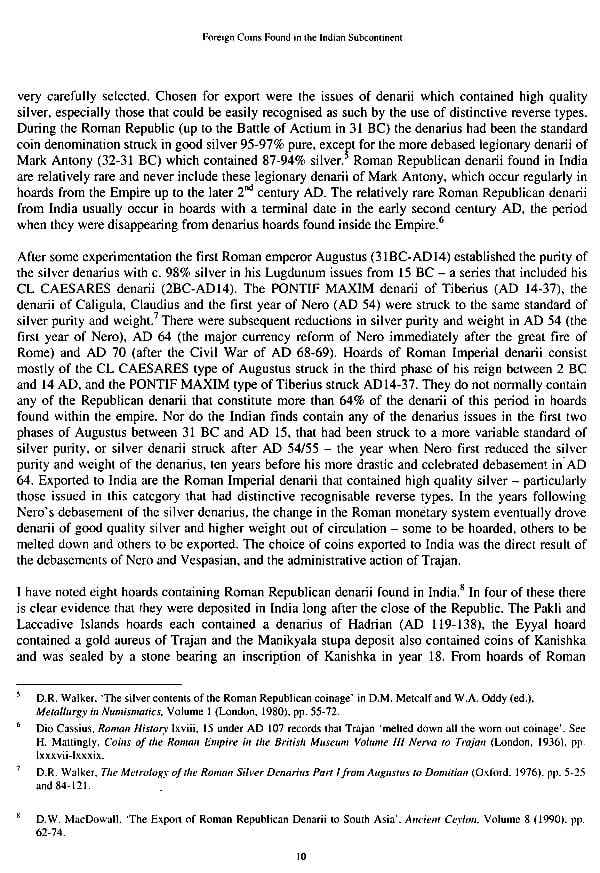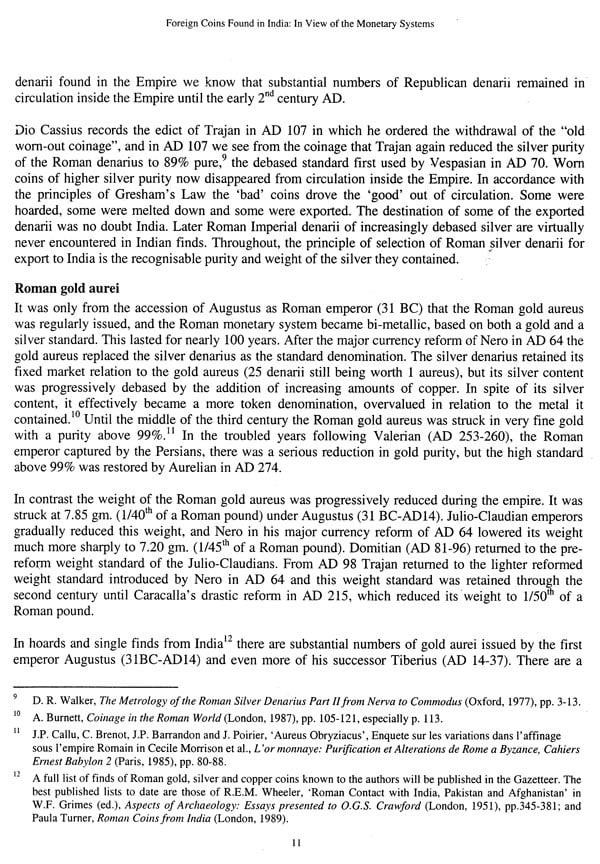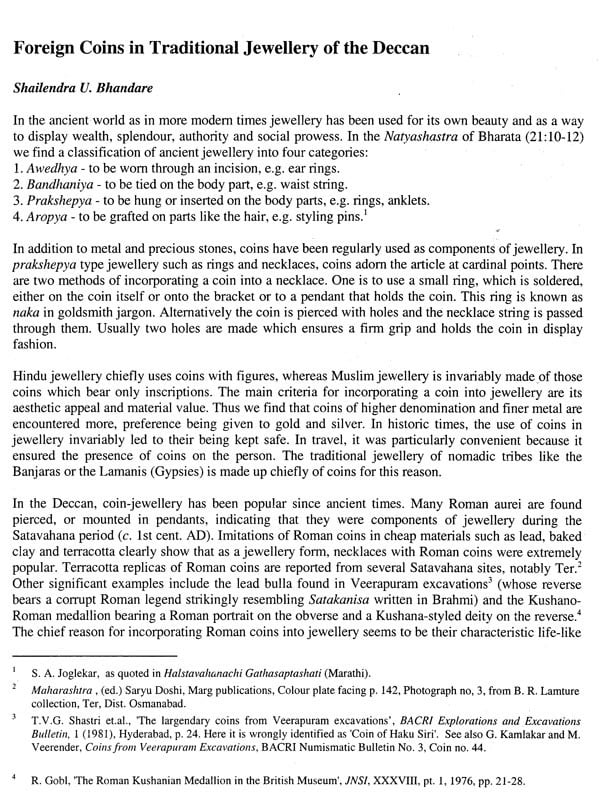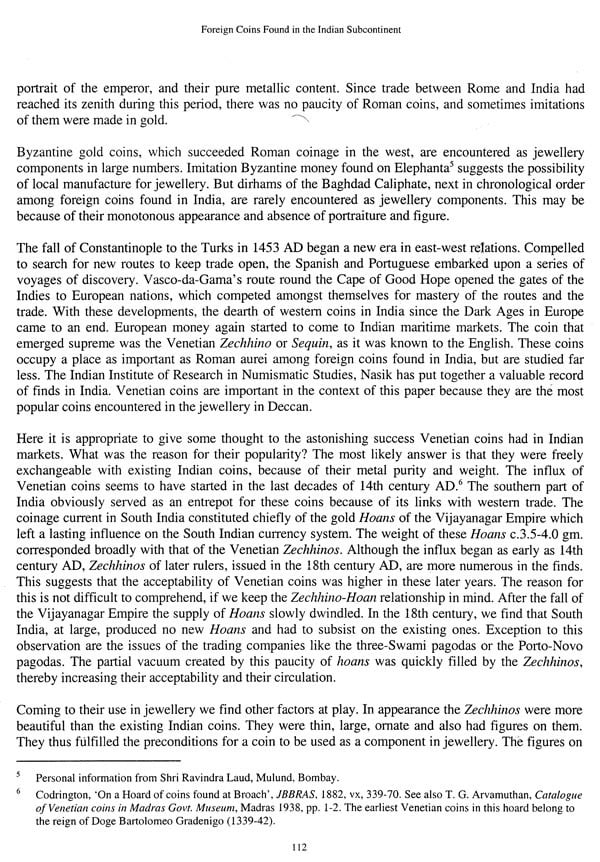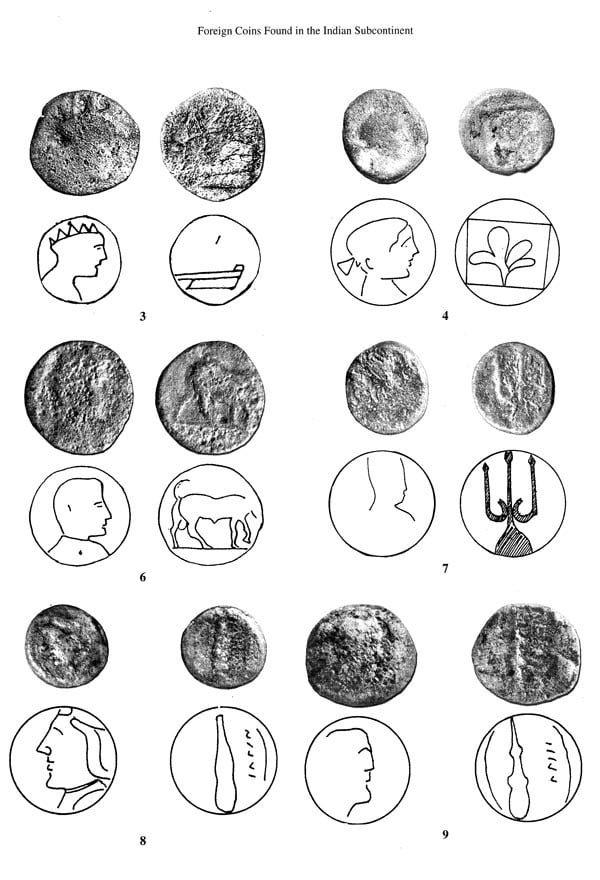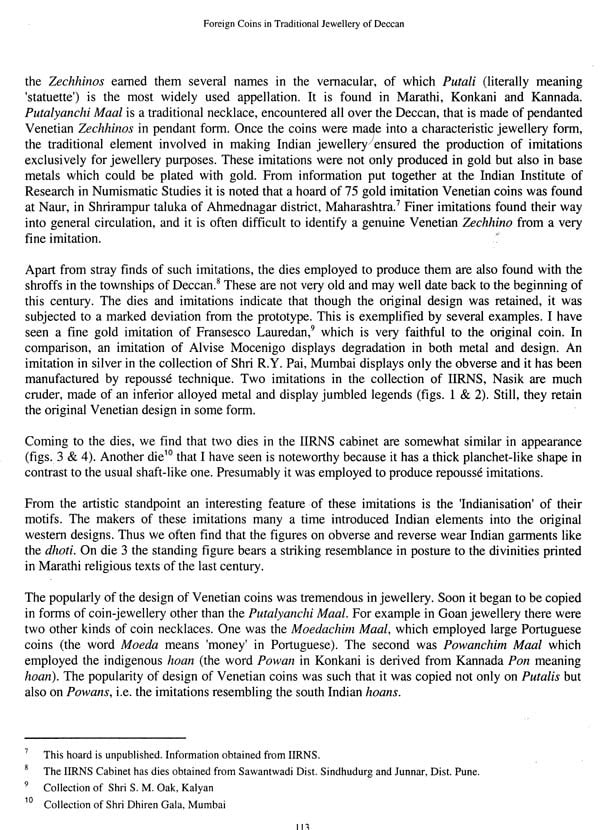
Foreign Coins Found in the Indian Sub-Continent
Book Specification
| Item Code: | UAC479 |
| Author: | David W. MacDowall and Amiteshwar Jha |
| Publisher: | IIRNS Publications Pvt. Ltd |
| Language: | English |
| ISBN: | 8186786171 |
| Pages: | 138 (Throughout B/W Illustrations) |
| Cover: | PAPERBACK |
| Other Details | 11.00 X 9.00 inch |
| Weight | 380 gm |
Book Description
The Indian Institute for Research in Numismatic Studies was established in 1980 with the specific objective of promoting the study of and research in numismatics in India - to help scholars and to carry out research in numismatics and allied subjects.
One of the important ways in which it has operated has been to convene international seminars from time to time, covering
Numismatics and History in 1984
Numismatics and Archaeology in 1987
Coinage, Trade and Economy in 1991
Foreign Coins found in the Indian Subcontinent in 1995 and
Mediaeval Indian Coinages: A Historical and Economic Perspective in 2001
The important communications from Indian and foreign scholars working in these fields have led to an interesting series of publications - the Symposium volumes. The present volume includes the papers presented during the 4th International Colloquium organised by the Institute between 8th and 10th January, 1995. Unfortunately, due to several reasons the publication of the papers presented at this symposium was delayed. We offer our sincere apologies to the contributors and the readers. We specially lament the fact that three of our contributors - Dr. Parmeshwari Lal Gupta, Prof. Ajay Mitra Shastri and Prof. M.C. Ganorkar passed away during this period and could not see their valuable contributions in print. These scholars, especially Dr. Gupta and Prof. Shastri were great stalwarts of Indian Numismatics and we take this opportunity to pay our homage to them.
We take this opportunity to express our gratitude to Shri K.K. Maheshwari, Chairman of the Indian Institute of Research in Numismatic Studies Trust, and his family members for their wholehearted support in successfully organising the colloquium. We also must acknowledge here our thanks and gratitude to our erstwhile colleagues Sarvashri Amal Kumar Jha, former Director of the Institute, Biswajeet Rath, P.V. Radhakrishnan, and the present colleagues at IIRNS, Sarvashri Danish Moin, Dilip Balsekar, Rehan Ahamad, K.T. Raundal and Mrs. L.D. Navale for their guidance and support without which it would not have been possible to organise the symposium and to bring out this volume. We are also grateful to Arti for carefully typesetting the papers, checking the proofs and effecting the corrections. For any typographical errors, however, that might have remained in spite of our best efforts, we are responsible.
We only hope that the contributions presented in this Volume will help generate debate and enquiries in the various aspects and issues related to the relevant coinages.
In recent year the Indian Institute for Research in Numismatic Studies has collaborated with the Society for So. Asian Studies of Me British Academy to photograph and document Roman coins found in India and kept in the various State Departments of Archaeology and Museums of India. The results of this project will form part of an Archaeological Gazetteer of Roman finds in India to be published with Me Archaeological Survey of India It will also serve as the basis of a more detailed numismatic volume dealing with Roman coins found in India to be published jointly by the Institute, the Society and the Fundmunzen der romischer Zeit of Germany. As part of its own programme, the Institute has been documenting coin hoards and finds generally throughout India. As a background to this seminar the Institute offered to make data from its archives available to interested specialists and invited numismatists knowledgeable about the background history and coinage systems of countries that had exported their coins to India to contribute.
This volume contains the wide range of interesting communication submitted to the seminar, sometimes revised in the light of the lively discussions that ensued. In his presidential address Prof. B.N. Mukherjee draws attention to some of the literary and epigraphic data available about foreign coins imported into India. In earlier times they arrived with traders, travellers or pilgrims. They also served as bullion. At times they influenced manufacturing techniques and metrology. Some of their devices came to be used on indigenous coinage.
The important distinction is drawn between foreign coins that represent the casual loss of small change and major trade currencies. There are briefing papers on the character of the Rom. and Venetian monetary systems and the factors that may explain why some coins rather than others were chosen for export as part of the bullion trade.
The ancient Greek copper coins found in the riverbed at Karur came mostly from eastern Mediterranean mints. In western India there are echoes of foreign trade in inscriptions mentioning Yavanas (foreign traders) at Karle and the Greek forms of centaurs and the four-horsed chariot of the sun at Bhaja. Foreign coin names, such as the Greek drachm and Roman dinar, long survived Indian epigraphy.
Much new evidence is provided about Roman coin finds. Roman gold coins, said to have come from Gujarat, are sold in the markets of Indore and Mumbai. It is argued that Roman gold was current in the Deccan from the Nasik cave inscription recording the donation of Ushabhadata son in law of Nahapana. Roman coin finds have a special significance in the Karimnagar Region of Andhra. The study of die links in hoards of Roman gold indicates that some coins in mint condition did not circulate long in the empire before export. The analysis of 28 Roman silver coins found in India shows that their metallic composition is very different from Mat of silver coins of the Indo-Greeks. Western Ksatraps and Satavahanas. A study of the unprovenanced Roman coins in the National Museum, New Delhi concludes that they do not provide evidence for Roman finds from India. Finds of Roman bullae in India underline their popularity in ornamentation.
Three hoards of Chinese coins from south India throw light on the foreign trade of China. The importance of the Venetian ducat is seen in the hoard of 39 gold coins from Gulbarga, Karnataka and documented in the long continued gold flow to India. It has a lasting influence in the traditional jewellery of Maharashtra. The evidence of seventeenth century travellers accounts reveal the surprising range of foreign coins encountered at Surat. Articles on all these topics show the rich results when pundits in different disciplines contribute their specialist knowledge to the common problems tackled by such a symposium.
